- Home
- Alison Weir
Eleanor of Aquitaine: A Life
Eleanor of Aquitaine: A Life Read online
Eleanor of Aquitaine
Alison Weir
This book is dedicated with heartfelt thanks to my agent, JULIAN ALEXANDER
and to JILL BLACK who has edited so many of my books.
ACKNOWLEDGMENTS
I should like to extend very special thanks to my editor, Anthony Whittome, for his creative input and his unflagging enthusiasm for this project, and to my commissioning editor, Will Sulkin, for his tremendous support. Gratitude is also due to Lily Richards for her indefatigable picture research.
As always, I must express my thanks to my agent Julian Alexander, without whom this book would not exist: he kept faith with this project for many years before its acceptance. I am grateful also to his former assistant, Kirstan Romano, for all her kindness. Finally, as ever, thank you, Rankin, my husband, and John and Kate, my children, for putting up with me while this book was in preparation. I could never have done it without you.
Contents
Preface xix
Prologue: 18 May 1152 1
1 "Opulent Aquitaine" 3
2 "A Model of Virtue" 21
3 "Counsel of the Devil" 37
4 "To Jerusalem!" 55
5 "A Righteous Annulment" 73
6 "A Happy Issue" 89
7 "All the Business of the Kingdom" 104
8 "Eleanor, by the Grace of God, Queen of England" 120
9 "The King Has Wrought a Miracle" 141
10 "Conjectures Which Grow Day by Day" 158
11 "The Holy Martyr" 177
12 "The Cubs Shall Awake" 189
13 "Beware of Your Wife and Sons" 198
14 "Poor Prisoner" 211
15 "Shame, Shame on a Conquered King!" 231
16 "The Eagle Shall Rejoice in Her Third Nesting" 248
17 "The Admiration of Her Age" 260
18 "The Devil Is Loosed!" 279
19 "The Staff of My Old Age" 300
20 "The Most Reverend Eleanor" 314
21 "The Brood of the Wicked Shall Not Thrive" 326
22 "A Candle Goeth Out" 336
Notes on the Chief Sources 347
Bibliography 355
Notes and References 375
Genealogical Tables 407
Index 423
A Note on Names and Spellings
Different variations of the names of people and places occur in twelfth-century sources. For example, the names Matilda, Maud, and Mahalde are interchangeable, as are Alice, Aaliz, and Alais.
For the sake of clarity, I have used different spellings of the same name to identify different people. Eleanor's daughter is called Alix, Richard Is betrothed of the same name Alys, and the Lord John's betrothed Alice. All are accurate renderings. A similar differentiation has been used with the name Amaury/Aymer/Aimery. Louis VII's daughter, often called Margaret in other works, is here referred to by the French version of her name, Marguerite.
Eleanor, who would have called herself Alienore, is referred to by the more familiar anglicised version of her name.
As in many other history books, William the Marshal is throughout referred to as such, even though he did not acquire his office of Marshal until 1199.
Although Eleanor was Countess of Poitou and Duchess of Aquitaine, I have occasionally used the name Aquitaine as a blanket term covering both her domains, although I have tried to differentiate between them wherever possible.
Many place names have changed since the twelfth century, and where appropriate I have given the modern name in parentheses. Some places no longer exist; wherever possible, I have attempted to discover their exact or approximate location.
Illustrations (not included)
Palais de Justice, Poitiers © Roger- Viollet
William IX, Duke of Aquitaine. Manuscript illumination, fr. 12473 fol. 128 © Bibliotheque Nationale, Paris
Louis VII, King of France. Manuscript illumination from "Grands Chroniques de France," fr. 2813 fol. 223 © Bibliotheque Nationale, Paris
Rock crystal vase, 12th c, from the Abbey of Saint-Denis, now in the Louvre © Reunion des Musees Nationaux-- Daniel Amaudet
Retable of St. Bernard of Clairvaux (detail), anon., 12th c, Museo de Mallorca, on loan from the Sociedad Arqueologica Luliana
Count Geoffrey of Anjou. Enamel tombstone, c. 1152, Musee de Tesse, Le Mans © Giraudon
Eleanor's seal, from a charter in the Archives de France © Atelier de photographic du Centre historique des Archives nationales, Paris
Engaged capital, thought to portray Henry II and Eleanor of Aquitaine. © The Metropolitan Museum of Art, The Cloisters Collection, 1934 (34.115.4ab)
Tomb of Matilda, daughter of Henry II, and Henry the Lion, Duke of Saxony, Brunswick Cathedral, late 12th c. © AKG London
Effigy of Henry the Young King (detail), late 12th c, Rouen Cathedral © Roger-Viollet
Effigy of Henry II (detail), late 12th c, Fontevrault Abbey © AKG London
Effigy of Richard I (detail), 1199-1200, Fontevrault Abbey © AKG London
Effigy of Berengaria of Navarre (detail), after 1230, Le Mans Cathedral © Geoffrey Wheeler
Effigy of King John (detail), c. 1225-1230, Worcester Cathedral © Geoffrey Wheeler
Mural from Sainte-Radegonde, Chinon, c. 1196 © By courtesy of Les Amis du Vieux Chinon
Effigy of Isabella of Angouleme (detail), mid 13th c, Fontevrault Abbey © Geoffrey Wheeler
Effigy of Eleanor of Aquitaine (detail), c. 1204, Fontevrault Abbey © AKG London
The tombs of the Plantagenets in the Abbey of Fontevrault © Bildarchiv Foto Marburg
Maps
The Angevin Empire in 1154 xv
Europe and the Holy Land in the Twelfth Century xvi
England in the Twelfth Century xviii
[map of the Angevin Empire in 1154 removed]
[map of Europe and the Holy Land in the Twelfth Century removed]
[map of Richard I's route during the Third Crusade, 1190-1194 removed]
[map of Eleanor's journey, 1190-1191 removed]
[map of England in the Twelfth Century removed]
Preface
When, after completing several books on the late mediaeval and Tudor periods, I suggested writing a biography of Eleanor of Aquitaine, it was put to me that it would be impossible for a biographer to do justice to a woman who lived eight centuries ago: that so few of her utterances or letters have come down to us that I would never be able to bring her to life as a real person to whom my readers could relate.
It was a valid point, because for the earlier mediaeval period, the sources that so vividly illuminate the characters of the Tudors-- diplomatic reports, letters, memoirs, diaries, biographies-- rarely survive. And there is a perception, common among those who are more familiar with the later period, that such monkish chronicles as we do have are mostly credulous, biased, and ill informed. In some cases, this is indeed so, particularly in respect of the period covering the early years of Henry II's reign, for which there is a paucity of contemporary sources; but there are a considerable number of English chronicles of outstanding quality for the latter part of the twelfth century.
The twelfth century in general is readily accessible to us today because it was an age of burgeoning scholarship that is now regarded as the first Renaissance, an age that gave birth to a succession of outstanding and perceptive chroniclers, whose relatively objective accounts of the personalities and events of their times document a wealth of facts, detail, and contemporary opinion.
Many of these writers were eyewitnesses to the events they described; most were well-educated, intelligent men, who were familiar with the court and the great figures of their age. From the pages of their chronicles, as well as from other surviving records, it is possible to garner a co
nsiderable amount of material on Eleanor. It is true that there is a lot we still do not know about her-- for example, no description of her appearance survives-- and that monkish chroniclers in general did not consider women, even queens, sufficiently important to merit much space in their works; but her deeds speak for themselves, as do her surviving charters and letters. I make no apology for quoting two of those letters at length, as they give such insights into Eleanor's character, as well as her state of mind at the time they were written.
There is much that is controversial about Eleanor, yet a great deal of the evidence is independently corroborated by other sources, and while she sometimes remains tantalisingly elusive, due to gaps in that evidence, we know enough of the events surrounding her, and of what her contemporaries thought about her, to draw some conclusions.
We must nevertheless understand that most mediaeval chronicles were not written primarily as historical narratives or analyses, but as moral tales to illustrate the mysterious workings of God in the events of the time. Almost without exception, chroniclers expected their works to have an improving effect upon their own generation and later ones, which would benefit spiritually from the lessons to be learned from history.
Many chronicles, such as the Chronicles of the Counts of Anjou (dedicated to Henry II and containing a flattering and stirring account of his father, Count Geoffrey), also contain stimulating and popular accounts of mythical or legendary persons and their exploits, making little or no attempt to distinguish between fact and fiction. On occasion, such stories were even fabricated for the enjoyment and edification of a credulous public. Furthermore, there are discrepancies between accounts of real events in the works of different chroniclers, and these oblige the historian to seek corroboration from as many sources as possible, where others exist. Often, they do not, and a writer must then use his or her own judgement as to which, on balance, is the most reliable account-- never an easy decision, and one that must always take account of what may be inferred from circumstantial evidence. Where this has happened, I have explained in the text or in the notes how I arrived at my conclusions.
Eleanor has been a popular figure with historical biographers for many decades now, and people often react with enthusiasm when her name is mentioned. I realise that I am going to upset some with the theories put forward in this book, but I would point out that these theories have been arrived at only after extensive scrutiny of the evidence and much thought. I have deliberately avoided falling into the romantic mode of some earlier biographies, and have looked afresh at every controversial issue in Eleanor's life, in some cases taking a new approach.
Above all, I have derived great enjoyment from researching and writing this book, although I have to admit that it has felt more like a piece of detective work than a conventional historical biography. I hope that what emerges in the following pages is a credible and balanced account, stripped of the myths, suppositions, and misunderstandings that have obscured the real Eleanor of Aquitaine, in both the distant and the recent past.
Alison Weir
Carshalton, July 1999
Prologue: 18 May 1152
In the Romanesque cathedral of Poitiers a man and a woman stood before the high altar, exchanging wedding vows. It was a simple ceremony. The young man, aged nineteen, was stocky, with red hair, and restless with pent-up energy, knowing he was doing a daring thing. The woman, eleven years his senior and with long auburn locks, was exceptionally beautiful, very sophisticated, and a willing accomplice in this furtive ceremony.
Few would have guessed, from the lack of pomp and splendour, that the marriage of this couple was to change the face of Europe. Yet the bridegroom was Henry, later called Plantagenet, Count of Anjou and Duke of Normandy, who had already established a reputation as one of the most formidable princes in Europe. Not only did he hold strategically important domains in what is now France, but he was also the heir to his mother Matilda's claim to the kingdom of England-- a claim that few doubted he would prosecute successfully.
Now Henry of Anjou was about to extend his territories even farther, by marriage to one of the greatest heiresses of the Middle Ages. The woman who stood beside him was Eleanor, Duchess of Aquitaine and Countess of Poitou in her own right, and former Queen of France. Not only did she own most of the land between the Loire and the Pyrenees, but she was also renowned for her loveliness. In every way, she was a great prize for an aspiring ruler.
However, it was as well that Henry of Anjou was a young man of strong character, since his bride was also headstrong and wilful. Nor had she reached the age of thirty without acquiring a reputation for scandalous behaviour. Rumours of her affairs and unconventional conduct, both in France and abroad during the Second Crusade, were notorious throughout Christendom. Her marriage to Louis VII of France had recently been annulled, ostensibly on the grounds of consanguinity, but in reality because Eleanor had failed to produce a male heir. In those days, this would have been regarded as entirely the woman's fault, although Eleanor would have had good grounds for disagreeing with that. The evidence suggests, moreover, that it was she, and not Louis, who had been the prime mover in the dissolution of their marriage.
Henry of Anjou was prepared to overlook the shady details of his bride's past so long as he could secure her desirable person and, more important, her great inheritance. In marrying her, hastily and without any display of appropriate ceremonial, the young Duke was aware that both he and his bride were defying their common overlord, King Louis of France himself, for neither had sought his permission for their union, as was customary. Nor would it have been forthcoming had they done so, since even the saintly Louis would have foreseen the consequences of such a marriage. Through it, and Henry's subsequent accession to the English throne in 1154, was founded the vast Angevin empire, which comprised England and much of what is now France and stretched from the Scottish border to the Pyrenees. Such an empire would pose a deadly threat to the much smaller kingdom of France.
But when Louis VII found out about the marriage, it was too late: the pattern of western European diplomacy and warfare had been set for the next four centuries.
This is Eleanor's story.
1. "Opulent Aquitaine"
Eleanor of Aquitaine was born into a Europe dominated by feudalism. In the twelfth century there was no concept of nationhood or patriotism, and subjects owed loyalty to their ruler, rather than the state.
Europe was split into principalities called feudatories, each under the rule of a king, duke, or count, and personal allegiance, or fealty, was what counted. This was expressed in the ceremony of homage, in which a kneeling vassal would place his hands between those of his overlord and swear to render him service and obedience.
The most powerful kings and lords could command obedience and aid from lesser rulers; a breach of fealty was generally held to be dishonourable, and although some paid mere lip service to the ideal, the threat of intervention in a dispute by one's overlord often remained an effective restraint. On the other hand, an overlord was bound to offer protection, friendship, and aid to a vassal beset by enemies, so the system had its advantages.
Feudal Europe was essentially a military society. Warfare was the business of kings and noblemen, and to many it was an elaborate game played by the rules of chivalry, a knightly code embodying ideals of courage, loyalty, honesty, courtesy, and charity. These rules were often strictly observed, and any breach of them was regarded with opprobrium.
Kings and lords might engage in the most bloody conflicts, but once sieges were broken, castles and territory taken, and a truce signed, it was agreed to be in everyone's best interests for good relations to be restored-- until the next conflict broke out. Thus, rulers could be enemies one month, yet swear undying friendship the next; such was the shifting scene of twelfth-century politics. The real victims of war were, of course, the peasants and townsfolk, who served as foot soldiers or were innocent victims of the sacking of towns and villages by mercenaries or the notoriously viol
ent routiers, ruthless desperadoes whose lives were dedicated to fighting and plunder. Humble noncombatants often perished in vast numbers at the whim of their rulers-- even that of Eleanor herself.
Christianity governed the lives of everyone in feudal Europe. Belief in the Holy Trinity was universal, and any deviation from the accepted doctrines of the Catholic Church-- such as the heresies of the Cathars in southern France-- was ruthlessly suppressed. Holy Church, presided over by the Pope in Rome, was the ultimate authority for all spiritual and moral matters, and even kings were bound by her decrees.
In this martial world dominated by men, women had little place. The Church's teachings might underpin feudal morality, yet when it came to the practicalities of life, a ruthless pragmatism often came into play. Kings and noblemen married for political advantage, and women rarely had any say in how they or their wealth were to be disposed in marriage. Kings would sell off heiresses or rich widows to the highest bidder, for political or territorial advantage, and those who resisted were heavily fined.
Young girls of good birth were strictly reared, often in convents, and married off at fourteen or even earlier to suit their parents' or overlord's purposes. The betrothal of infants was not uncommon, despite the Church's disapproval. It was a father's duty to bestow his daughters in marriage; if he was dead, his overlord or the King himself would act for him. Personal choice was rarely an issue.
Upon marriage, a girl's property and rights became invested in her husband, to whom she owed absolute obedience. Every husband had the right to enforce this duty in whichever way he thought fit-- as Eleanor was to find out to her cost. Wife-beating was common, although the Church did at this time attempt to restrict the length of the rod that a husband might use.
It is fair to say, however, that there were women who transcended the mores of society and got away with it: the evidence suggests that Eleanor of Aquitaine was one such. There were then, as now, women of strong character who ruled feudal states and kingdoms, as Eleanor did; who made decisions, ran farms and businesses, fought lawsuits, and even, by sheer force of personality, dominated their husbands.

 Richard III and the Princes in the Tower
Richard III and the Princes in the Tower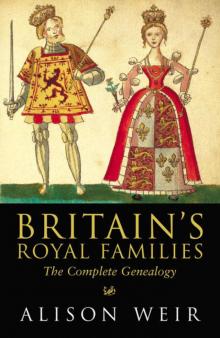 Britain's Royal Families: The Complete Genealogy
Britain's Royal Families: The Complete Genealogy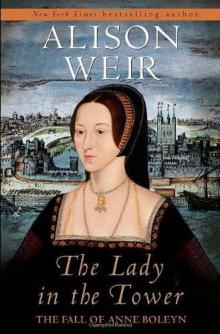 The Lady in the Tower: The Fall of Anne Boleyn
The Lady in the Tower: The Fall of Anne Boleyn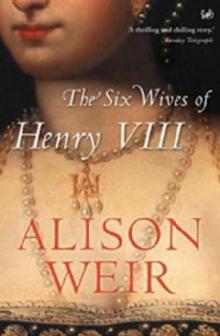 Six Wives of Henry VIII
Six Wives of Henry VIII Elizabeth of York: A Tudor Queen and Her World
Elizabeth of York: A Tudor Queen and Her World Captive Queen
Captive Queen Innocent Traitor
Innocent Traitor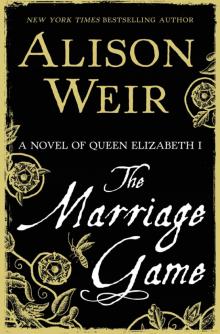 The Marriage Game
The Marriage Game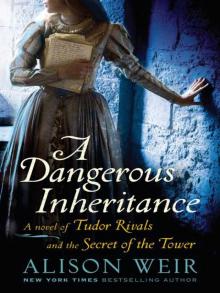 A Dangerous Inheritance
A Dangerous Inheritance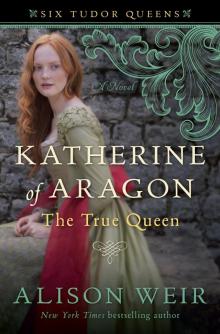 Katherine of Aragón: The True Queen
Katherine of Aragón: The True Queen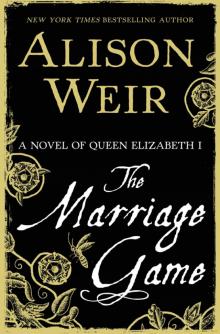 The Marriage Game: A Novel of Queen Elizabeth I
The Marriage Game: A Novel of Queen Elizabeth I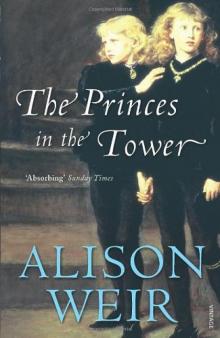 Princes in the Tower
Princes in the Tower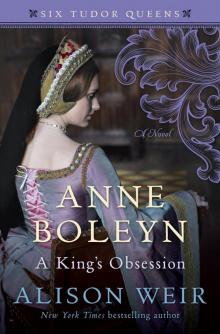 Anne Boleyn: A King's Obsession
Anne Boleyn: A King's Obsession Traitors of the Tower
Traitors of the Tower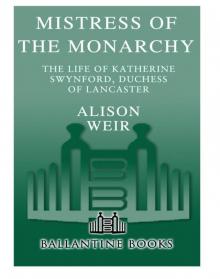 Mistress of the Monarchy: The Life of Katherine Swynford, Duchess of Lancaster
Mistress of the Monarchy: The Life of Katherine Swynford, Duchess of Lancaster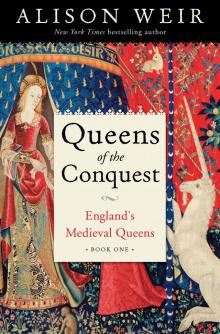 Queens of the Conquest: England’s Medieval Queens
Queens of the Conquest: England’s Medieval Queens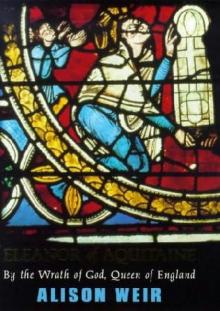 Eleanor of Aquitaine: A Life
Eleanor of Aquitaine: A Life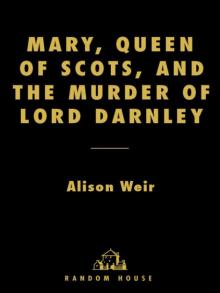 Mary, Queen of Scots, and the Murder of Lord Darnley
Mary, Queen of Scots, and the Murder of Lord Darnley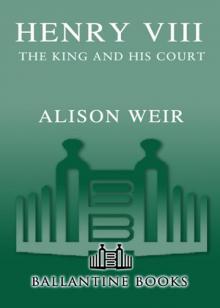 Henry VIII: The King and His Court
Henry VIII: The King and His Court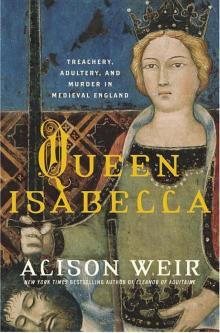 Queen Isabella: Treachery, Adultery, and Murder in Medieval England
Queen Isabella: Treachery, Adultery, and Murder in Medieval England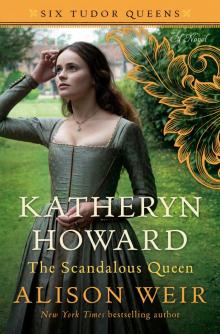 Katheryn Howard, the Scandalous Queen
Katheryn Howard, the Scandalous Queen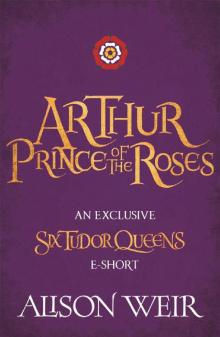 Arthur- Prince of the Roses
Arthur- Prince of the Roses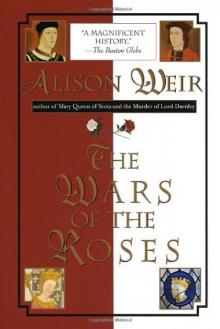 The Wars of the Roses
The Wars of the Roses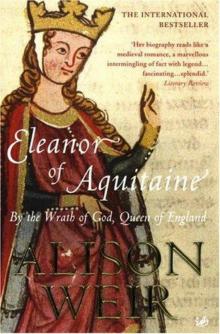 Eleanor of Aquitaine: By the Wrath of God, Queen of England
Eleanor of Aquitaine: By the Wrath of God, Queen of England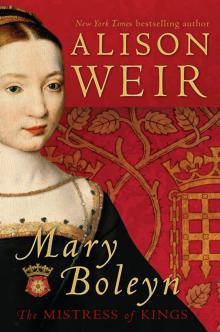 Mary Boleyn: The Great and Infamous Whore
Mary Boleyn: The Great and Infamous Whore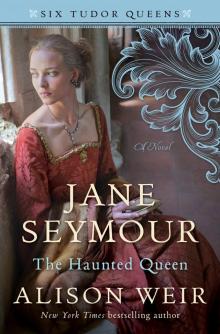 Jane Seymour: The Haunted Queen
Jane Seymour: The Haunted Queen Anna of Kleve, the Princess in the Portrait
Anna of Kleve, the Princess in the Portrait Lancaster and York: The Wars of the Roses
Lancaster and York: The Wars of the Roses The Grandmother's Tale
The Grandmother's Tale The Princess of Scotland (Six Tudor Queens #5.5)
The Princess of Scotland (Six Tudor Queens #5.5)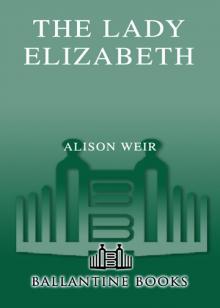 The Lady Elizabeth
The Lady Elizabeth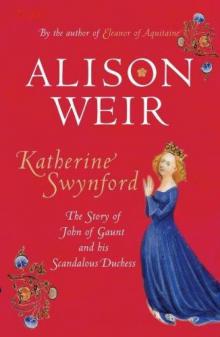 Katherine Swynford: The Story of John of Gaunt and His Scandalous Duchess
Katherine Swynford: The Story of John of Gaunt and His Scandalous Duchess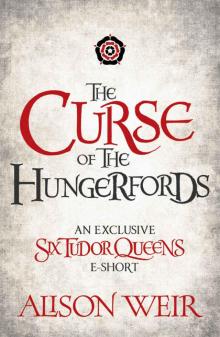 The Curse of the Hungerfords
The Curse of the Hungerfords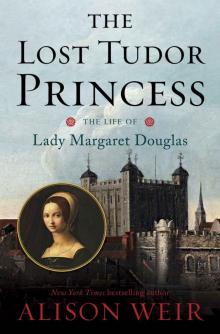 The Lost Tudor Princess: The Life of Lady Margaret Douglas
The Lost Tudor Princess: The Life of Lady Margaret Douglas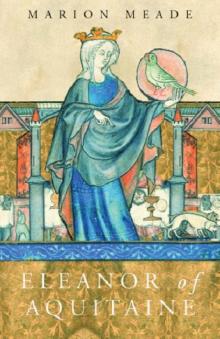 Eleanor of Aquitaine
Eleanor of Aquitaine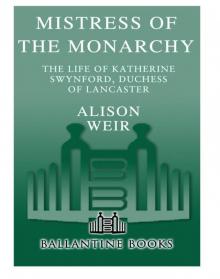 Mistress of the Monarchy
Mistress of the Monarchy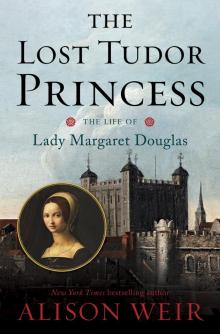 The Lost Tudor Princess
The Lost Tudor Princess Henry VIII
Henry VIII Anne Boleyn, a King's Obsession
Anne Boleyn, a King's Obsession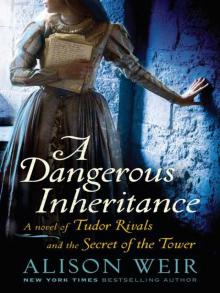 A Dangerous Inheritance: A Novel of Tudor Rivals and the Secret of the Tower
A Dangerous Inheritance: A Novel of Tudor Rivals and the Secret of the Tower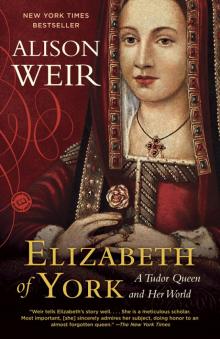 Elizabeth of York
Elizabeth of York Katherine of Aragon, the True Queen
Katherine of Aragon, the True Queen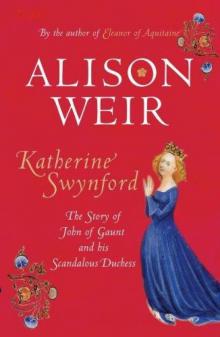 Katherine Swynford
Katherine Swynford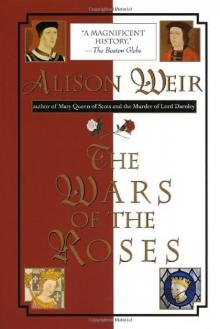 Wars of the Roses
Wars of the Roses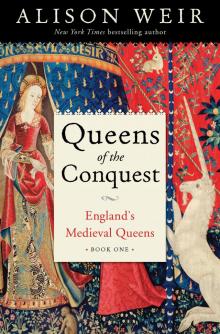 Queens of the Conquest
Queens of the Conquest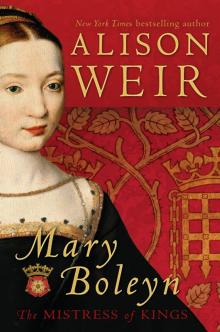 Mary Boleyn
Mary Boleyn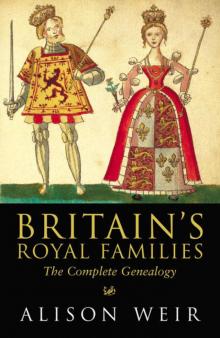 Britain's Royal Families
Britain's Royal Families The Tower Is Full of Ghosts Today
The Tower Is Full of Ghosts Today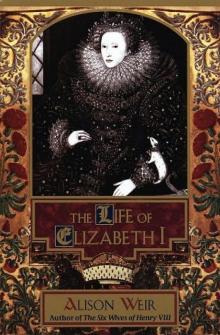 Life of Elizabeth I
Life of Elizabeth I Anne Boleyn A King's Obssession
Anne Boleyn A King's Obssession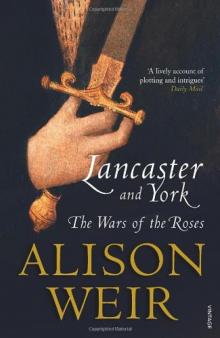 Lancaster and York
Lancaster and York Jane Seymour, the Haunted Queen
Jane Seymour, the Haunted Queen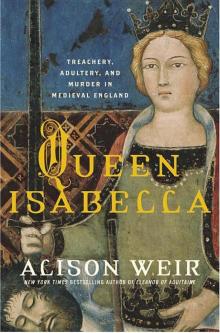 Queen Isabella
Queen Isabella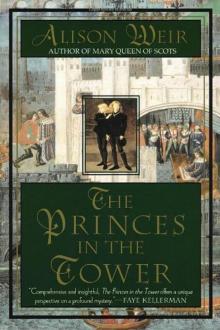 The princes in the tower
The princes in the tower